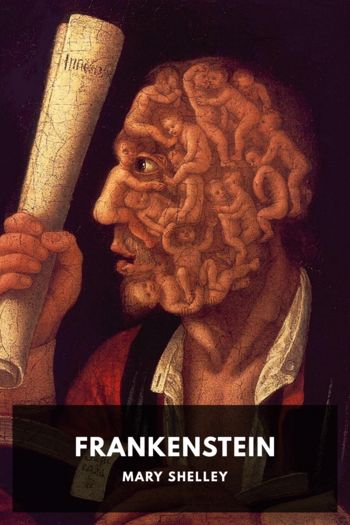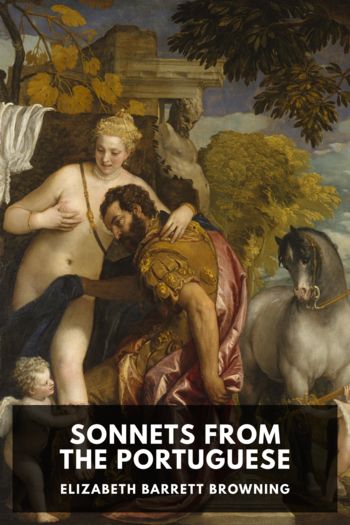Two-Way Mirror Fiona Sampson (best romance ebooks .txt) 📖

- Author: Fiona Sampson
Book online «Two-Way Mirror Fiona Sampson (best romance ebooks .txt) 📖». Author Fiona Sampson
The couple now seem to be leading almost parallel lives. While Elizabeth sits for her portrait thrice – in March to Field Talfourd and Eliza Bridell Fox, and in May to Rudolf Lehmann (who also paints Robert) – her husband is learning to draw, tutored by a young lady, Mary Mackenzie. He has also become a particular fan of Adelaide Ristori’s acting, and, in the first week of January 1859 alone, he goes to three productions in which she stars. The artist Frederic Leighton and actress Charlotte Cushman are among the many acquaintances, often celebrated, that Robert now sees ‘sometimes two or three times deep in a one night’s engagements’; so are older friends like Nathaniel Hawthorne, William Page, and the Storys. ‘So plenty of distraction, and no Men and Women’, Elizabeth frets. Political turmoil is intensifying, and Robert also meets up with ‘the really instructed people’: former ambassador Lord Stratford de Redcliffe, diplomat Odo Russell, and Times correspondent Henry Wreford. In mid-March, he even briefs the Prince of Wales on the Italian situation over a dinner.
Elizabeth, equally riveted by the political events unfolding around them, tries to get Robert writing by proposing that they publish together again: this time, poems celebrating the end of Austrian rule. But Austrian rule is not at an end. On 3 May 1859, roughly a week after Austria sends troops into Piedmont-Sardinia, France declares war on Austria; by the end of the month, when Elizabeth and Robert return home to Florence, French troops are in the city and the Austrian Grand Duke has fled. In June, the French ally with the Piedmontese to defeat the Austrians twice, at Magenta and Solferino. But they suffer such heavy losses that they throw away the liberation they’ve won at so much cost. On 11 July, at Villafranca, they make a peace, which, while it unites Lombardy with Piedmont, returns much of northern Italy to Austrian control.
This shocking decision has wide-reaching effects. The end of the ‘beautiful dream’ of a free Italy is felt within the Brownings’ relationship too. Robert destroys his celebratory poem; Elizabeth keeps hers, ‘Napoleon III in Italy’, but as usual when she’s faced with a grief too big for expression, her health collapses. She’s in bed for nearly three weeks. When the time comes for the usual summer move to the country – this time to Marciano, a hilltop village that’s almost a satellite of Siena – she has to be carried from the train, and is confined to bed for her first ten days at ‘grim square’ Villa Alberti. Advised by Elizabeth’s Roman doctor E. G. T. Grisanowsky to seek a healthier climate, the Brownings won’t return to Florence this year till mid-October.
The air in Siena is undeniably fresher than it is in Rome: it is out of the Tiber basin and a little further north, while not as northerly as Florence. The Brownings squeeze in just six weeks at home in Casa Guidi before setting out once more for Rome on 28 November, harried south by the approaching winter. For Elizabeth, life itself is feeling increasingly unsustainable; travel is the most exhausting of remedies. Yet through all the comings and goings she continues to write. The enormous set-piece efforts of her achievement – elopement, child-bearing, the compositions culminating in Aurora Leigh, not to mention the sheer effort of surviving chronic illness – all demonstrate her fierce will to embrace life. Possibly writing helps concentrate that will by narrowing its focus. Morphine certainly helps. But if this were widely known it could cause a scandal. Already at the start of this year Robert called on Louisa Crawford to protest about her sister Julia Ward Howe’s allegations, in a spitefully slanderous poem baldly titled ‘One Word More with E.B.B.’, that Elizabeth’s ‘unearthly’ verse, her ‘ill-directed flight / And sentence, mystical, and hard’, is the result of a ‘nameless draught […] a drug’. Elizabeth’s own response was to admit ruefully to Sophie Eckley that morphine was indeed her lifeline.
But now even this isn’t quite enough to manage her symptoms, though her imagination is certainly undimmed as she writes ‘An August Voice’, ‘A Tale of Villafranca’ – and ‘Where’s Agnes?’, a grief-struck debunking of spiritualism. Here, as she has before, she approaches autobiographical material ‘slant’, through fiction. The poem’s narrator has lost a dear friend, Agnes, who cannot come back from the dead because she’s too good to have any truck with things hellish. Her ghostly ‘manifestation’ must therefore be a fake; which means that Agnes is now nothing more than ‘That sort of worm in the clay’. Embodiment, the ‘worm in the clay’, means mortality for all of us – the poem’s speaker and its reader too. ‘And my mouth is full of dust / Till I cannot speak’, Elizabeth concludes.
For by late 1859 the hope that spiritualism held out to her, of transcending the mortal body, is itself dying. At the end of the summer she sends Sophie a letter questioning some of the supernatural experiences that seemed especially staged by the younger woman. What





Comments (0)